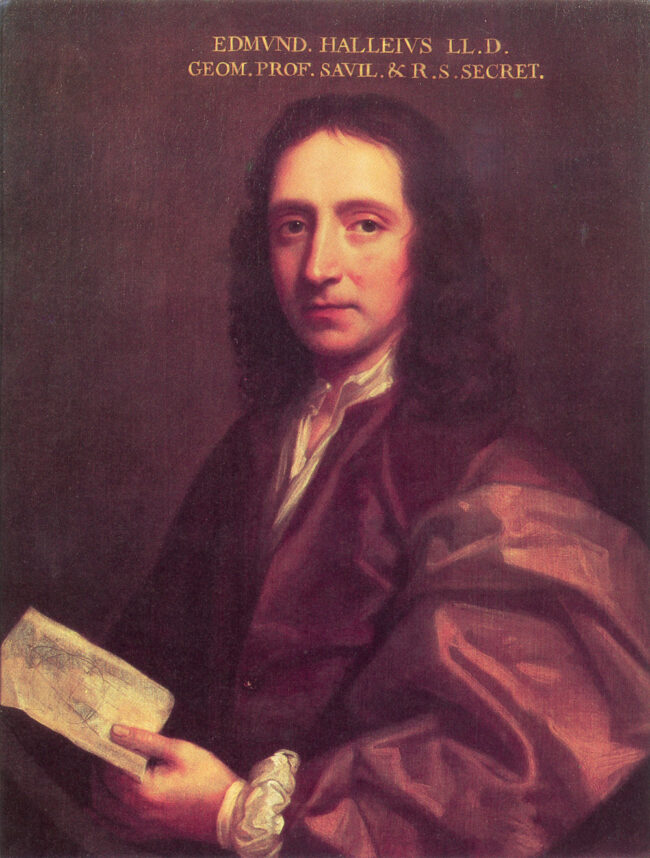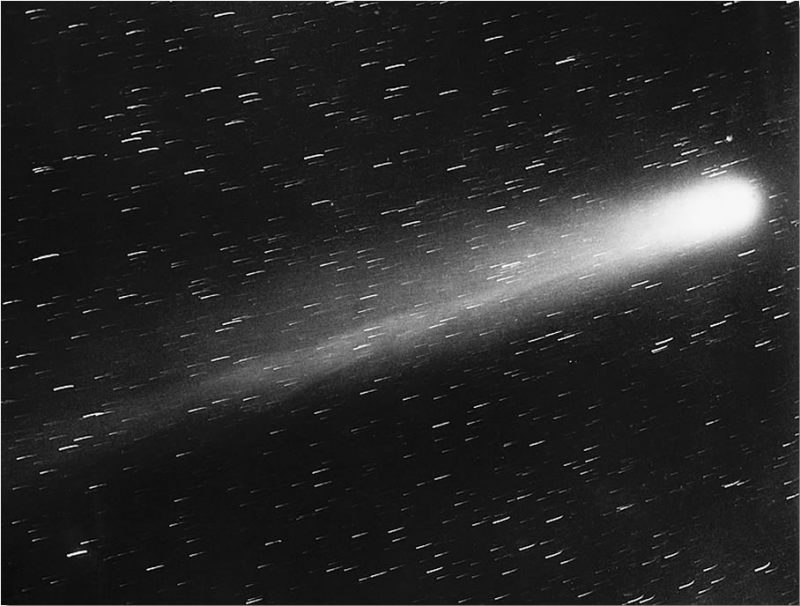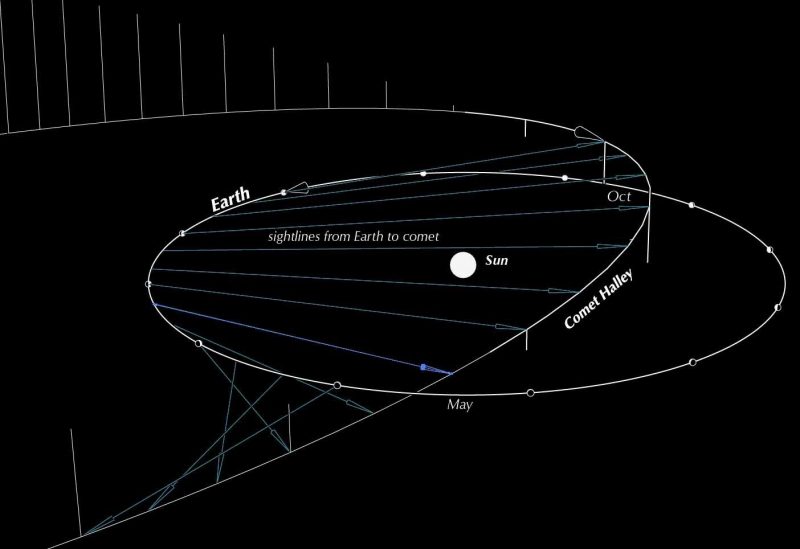
Comet Halley is farthest from the sun on December 9
Comet Halley is probably the most famous comet. After observing a “hairy star” in 1682, English astronomer Edmond Halley looked at the historic record of such objects. He noted similarities in visits from objects in 1531, 1607 and 1682 and believed they were repeat appearances of the same object. Then, he predicted that this “hairy star” would return in 1758.
And so it did, although Halley himself didn’t live to see it. But the comet now bears his name. Perhaps some of you have seen Comet Halley. The comet’s most recent close approach to the sun – called perihelion – was on February 9, 1986. Its next closest approach to the sun will be on July 28, 2061. Which means Comet Halley is now nearing its farthest from the sun – or aphelion – on December 9, 2023.
The 2024 lunar calendars are here! Best Christmas gifts in the universe! Check ’em out here.

Halley’s orbit
The relatively predictable and short orbit is what made Comet Halley famous. Actually, the orbit of Comet Halley varies slightly from 75 to 79 years. Therefore it has a short enough orbital period that it’s possible for someone to see it twice in their lifetime. Edmond Halley’s prediction of its return was soon enough (though not for him) that it made his theory testable. It became a key to understanding what comets were.
Comet Halley is what we now call a short-period comet, or one that takes less than 200 years to orbit the sun. Long-period comets can take from 200 years up to millions of years to orbit the sun. In fact, it can take comets in the Oort Cloud as long as 30 million years to orbit the sun once.


The comet and 2 meteor showers
Aphelion, when an object is farthest from the sun, is not a good time to observe. But if you don’t want to wait another 38 years to see at least bits of Comet Halley, I’ve got good news for you. We get to see parts of this comet every year in the form of meteors.
Comet Halley is the parent of two meteor showers. When comets orbit the sun, they leave bits of cometary dust behind. And for this comet, Earth’s orbit intersects two of these paths in one calendar year. The first is in May with the Eta Aquariid meteor shower. Then, in October, we intersect with another part of Halley’s path when we see the Orionid meteors.


Bottom line: Comet Halley reaches its farthest point in its orbit from the sun – called aphelion – on December 9, 2023. After that, it will begin its return trip to the inner solar system, reaching its closest point to the sun on July 28, 2061.